The U.S. healthcare system saves billions every year because of generic drugs. But how do these cheaper versions of brand-name medications actually get approved? The answer lies in the FDA’s Abbreviated New Drug Application, or ANDA. It’s not a shortcut-it’s a science-backed pathway designed to bring safe, effective generics to market without repeating every clinical trial ever done.
What Exactly Is an ANDA?
An ANDA is a regulatory submission to the FDA that lets a company sell a generic version of a brand-name drug. It’s called "abbreviated" because it doesn’t require the applicant to prove the drug is safe and effective from scratch. Instead, it relies on the FDA’s previous findings for the original drug, known as the Reference Listed Drug (RLD).For example, if you’re trying to make a generic version of Lipitor (atorvastatin), you don’t need to run new heart disease outcome studies. You just need to prove your version works the same way in the body. That’s the core of the ANDA: bioequivalence.
The ANDA process was created by the Hatch-Waxman Act of 1984. Before that, generic manufacturers had to go through the same expensive, years-long approval process as brand-name companies. Hatch-Waxman changed that. It gave generics a faster, cheaper route-while still protecting innovation. Today, 90% of prescriptions in the U.S. are filled with generics. They cost just 23% of what brand-name drugs do.
How the ANDA Process Works
The FDA’s Office of Generic Drugs (OGD) handles all ANDA reviews. The process isn’t simple, but it’s structured. Here’s how it breaks down:- Submission: The applicant files an electronic application via the FDA’s Electronic Submission Gateway. The form FDA-356h is required, along with financial disclosure forms. The submission must follow the FDA’s 2020 guidance on content and format.
- Filing Review: Within 60 days, the FDA checks if the application is complete. Missing documents? The application gets returned. No review happens until it’s accepted.
- Discipline Reviews: Teams of scientists-chemistry, manufacturing, microbiology, labeling, and bioequivalence-review every piece of data. This is where most applications get stuck. Each team looks for specific issues: Is the active ingredient pure? Does the manufacturing facility meet cGMP standards? Is the labeling accurate? And most importantly, does the generic drug behave the same way in the body as the brand?
- Information Requests: If something’s unclear or incomplete, the FDA sends an Information Request (IR). This isn’t a rejection-it’s a request for more data. On average, applicants get 10-17 IRs across disciplines. One company reported spending $1.2 million and three tries just to get bioequivalence right for a topical cream.
- Final Decision: If all issues are resolved, the FDA issues either Final Approval or Tentative Approval. Final Approval means the drug can be sold immediately. Tentative Approval means the science checks out, but the FDA can’t approve it yet because of patents or exclusivity on the brand-name drug.
The entire process usually takes about 30 months from submission to approval. But under GDUFA III (effective October 2022), the FDA aims to review original ANDAs within 10 months. In 2022, 91% of first-cycle reviews met that goal.
What Makes a Generic Drug Equivalent?
It’s not enough for a generic to have the same active ingredient. The FDA requires five key matches:- Active ingredient: Same chemical compound, same amount.
- Strength: Same dosage per unit (e.g., 20 mg tablets).
- Form: Same delivery method-tablet, capsule, injection, etc.
- Route of administration: Oral, topical, inhaled-all must match.
- Labeling: Same uses, warnings, and instructions-with minor exceptions for inactive ingredients or manufacturer details.
The hardest part? Proving bioequivalence. This means showing that the generic drug enters the bloodstream at the same rate and to the same extent as the brand. For simple pills, this is usually done with a small study in healthy volunteers. Blood samples are taken over time to measure how much of the drug gets absorbed.
But for complex products-like inhalers, injectables, or topical creams-bioequivalence is much harder. The FDA has published over 2,000 product-specific guidances to help. In 2022, 35% of pending ANDAs were for complex generics. These take longer to review and often require specialized testing.

ANDA vs. NDA: Why It’s So Much Cheaper
The difference between an ANDA and a New Drug Application (NDA) is huge. An NDA, used for brand-name drugs, requires full preclinical and clinical trials. The cost? Around $2.3 billion per drug, according to Tufts Center for the Study of Drug Development.An ANDA? Between $1 million and $5 million. That’s because the generic company doesn’t have to pay for safety and efficacy studies. They’re building on the FDA’s existing approval of the brand-name drug.
There’s also the 505(b)(2) pathway, which sits between the two. It lets companies make changes to existing drugs-like a new dosage or formulation-and submit some new data. But it’s not a generic route. It’s for modified products, not direct copies.
Why Do ANDAs Get Rejected?
The approval rate is high-91% for first-cycle reviews-but that doesn’t mean applications get approved easily. Most rejections come down to three things:- Bioequivalence issues (35% of Complete Response Letters): Poor study design, small sample size, or inconsistent results.
- Manufacturing problems (28%): Facilities not meeting cGMP standards. The FDA inspects every facility used in the ANDA. If a factory in India or China has compliance issues, the whole application stalls.
- Labeling errors (22%): Missing warnings, incorrect dosage instructions, or inconsistent formatting.
One common mistake? Assuming that if the active ingredient is the same, everything else falls into place. It doesn’t. The inactive ingredients-fillers, dyes, coatings-can affect how the drug is absorbed. The FDA requires detailed data on these too.
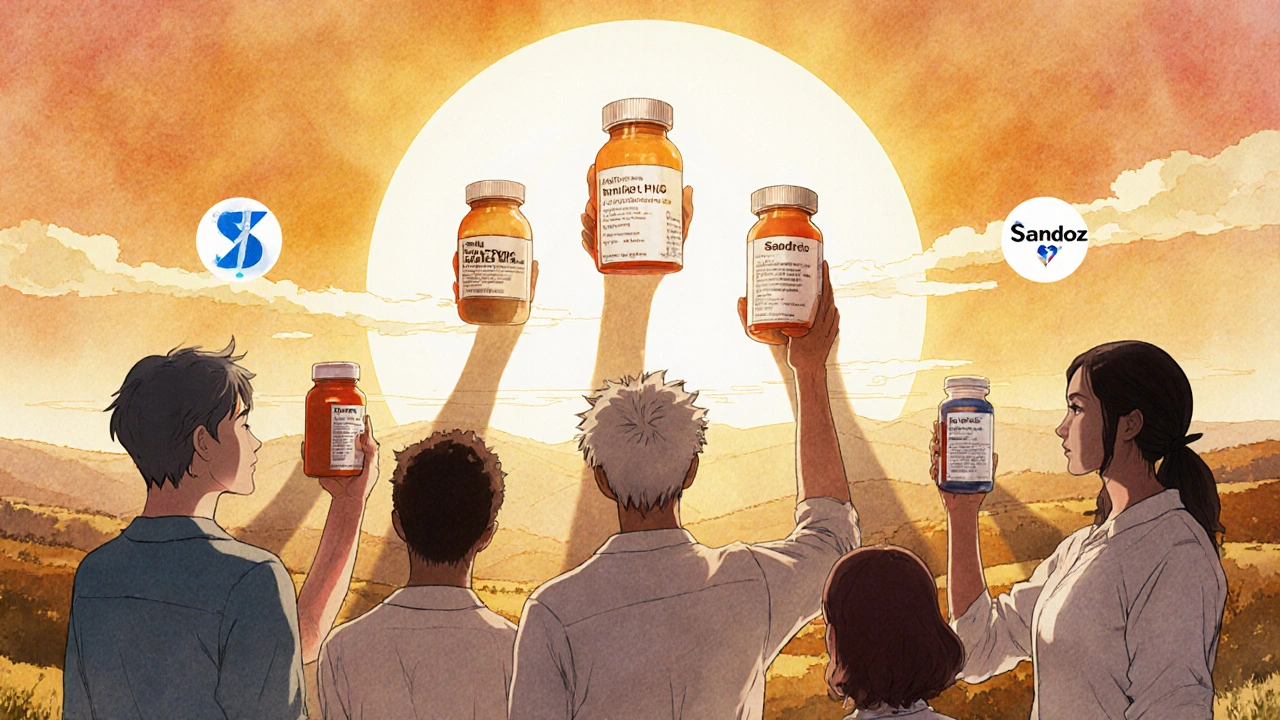
Who’s Playing the Game?
The U.S. generic market was worth $127.6 billion in 2022 and is expected to hit $189.2 billion by 2027. The big players dominate:- Teva Pharmaceuticals: 22% market share
- Viatris (formerly Mylan): 15%
- Sandoz: 12%
But 75% of ANDAs come from companies that already have five or more approved generics. These firms have built internal teams of 10-15 regulatory, manufacturing, and clinical experts. They’ve learned how to navigate the system. One Teva executive said after their tenth ANDA, they hit GDUFA timelines 92% of the time.
Smaller companies struggle more. The average prep time for an ANDA is 12-18 months. That’s a lot of time and money for a startup. That’s why many use pre-ANDA meetings with the FDA. About 78% of successful applicants do this. It’s a chance to ask questions before spending millions on studies.
What’s Changing in the ANDA Process?
The FDA is adapting. As more complex generics enter the pipeline, the agency is investing in new tools:- AI-assisted reviews: 78% of FDA chemistry reviewers now use AI tools to analyze data faster.
- Real-world evidence: For complex products, the FDA is exploring whether patient data from outside clinical trials can support approval.
- International harmonization: The FDA is working with the ICH to align standards with Europe and Japan, making global approvals easier.
But challenges remain. Patent thickets-where brand companies file multiple patents to delay generics-still block access. Some drugs have over 20 patents. And REMS (Risk Evaluation and Mitigation Strategies) programs can restrict generic access by limiting who can distribute the brand drug.
What This Means for Patients
You don’t need to understand the ANDA process to benefit from it. But knowing how it works helps you trust generics. A generic isn’t a "cheap copy." It’s a scientifically proven equivalent. The FDA holds it to the same standards as the brand.When a brand drug loses exclusivity, prices drop fast. Within a year, generics are typically priced at 15% of the brand’s cost. That’s how the system saves $373 billion a year.
And if a generic is approved, it’s safe. The FDA inspects manufacturing sites. It checks every batch. It monitors adverse events. The system isn’t perfect-but it’s one of the most effective public health tools we have.
What’s the difference between an ANDA and an NDA?
An NDA is for brand-name drugs and requires full clinical and preclinical data proving safety and effectiveness. An ANDA is for generics and only requires proof of bioequivalence to an already approved drug. ANDAs skip expensive trials by relying on the FDA’s prior findings.
Why do some generic drugs take longer to get approved?
Complex generics-like inhalers, injectables, or topical creams-are harder to prove equivalent. They require specialized testing, more data, and longer reviews. Also, if the brand drug is still under patent or exclusivity, the ANDA gets Tentative Approval until those protections expire.
Are generic drugs as safe as brand-name drugs?
Yes. The FDA requires generics to meet the same quality, strength, purity, and stability standards as brand-name drugs. Every manufacturing facility is inspected. Every batch is tested. Over 90% of prescriptions in the U.S. are filled with generics-and they’ve been used safely for decades.
Can a generic drug be different from the brand?
The active ingredient must be identical. But inactive ingredients-like fillers, dyes, or coatings-can differ. These don’t affect how the drug works, but they might change the pill’s color or shape. Some people report minor differences in side effects, but these are rare and not due to effectiveness.
How long does it take to get an ANDA approved?
On average, it takes about 30 months from submission to approval. But under current FDA goals (GDUFA III), original ANDAs should be reviewed within 10 months. Many are approved faster, especially if the application is clean and the product isn’t complex.
What’s a Tentative Approval?
Tentative Approval means the FDA has found the generic drug meets all scientific requirements but can’t be fully approved yet. This usually happens because the brand-name drug is still protected by a patent or exclusivity period. Once those protections expire, the FDA can grant Final Approval.
Do all generic drugs come from the same manufacturers as brand-name drugs?
Sometimes. Many brand-name companies also make generic versions of their own drugs after patents expire. But most generics are made by companies that specialize in them, like Teva, Viatris, or Sandoz. The FDA doesn’t care who makes it-only that it meets the same standards.

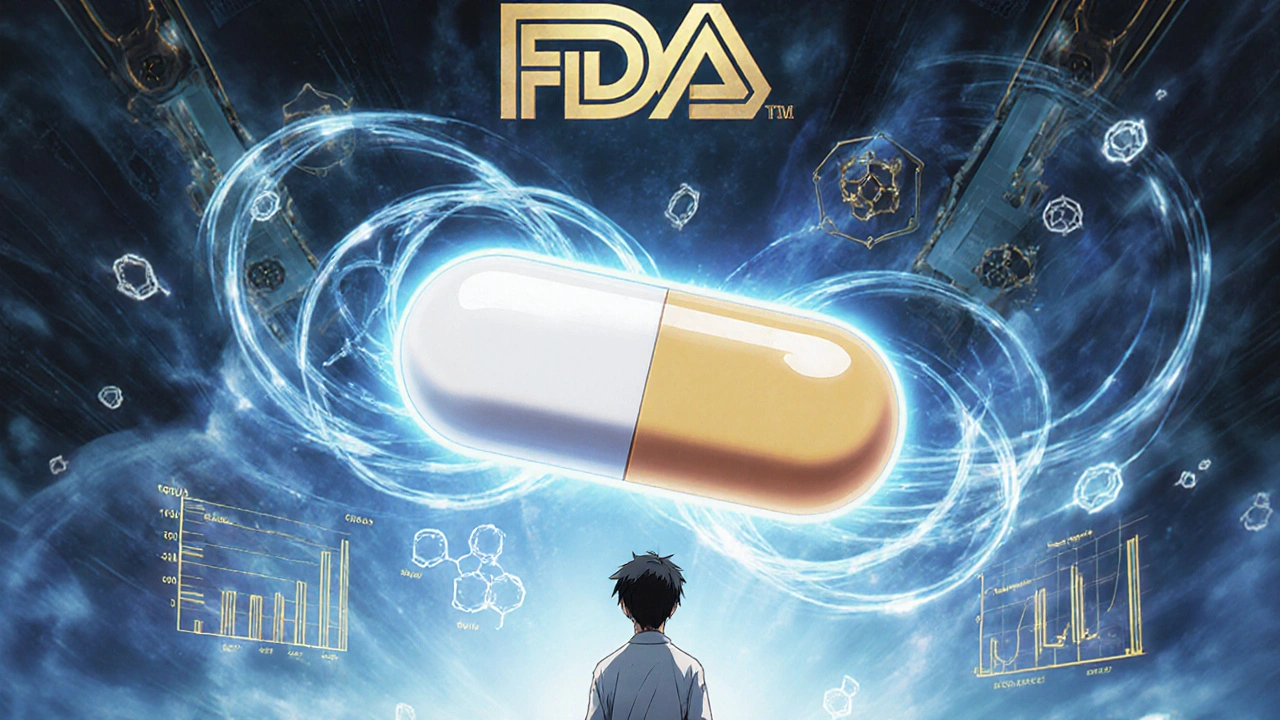

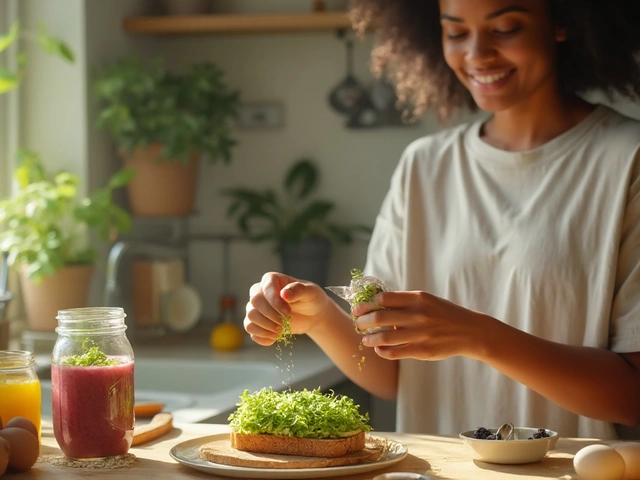
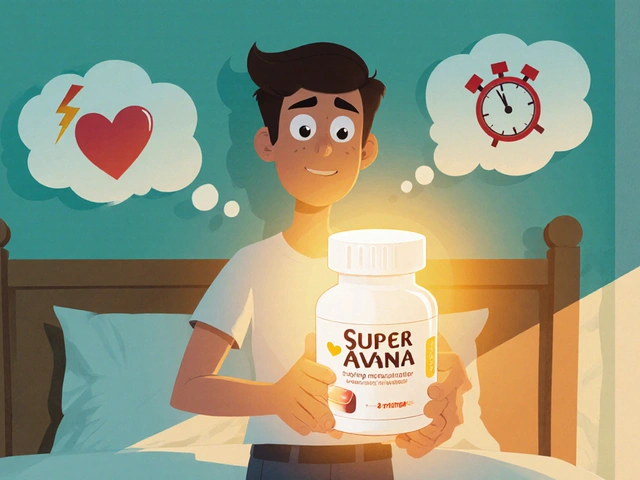
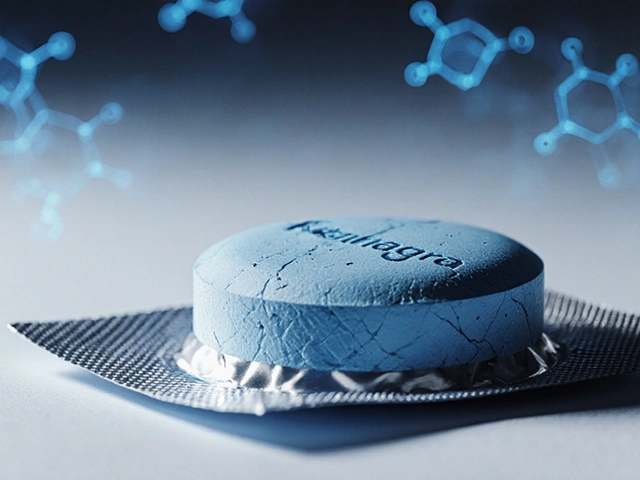
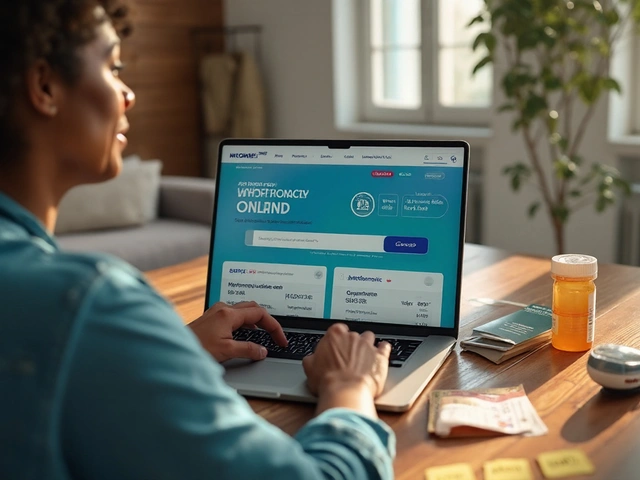

kaushik dutta
November 29, 2025 AT 06:01The ANDA process is a masterpiece of regulatory engineering-bioequivalence isn't just a buzzword, it's a quantitative guarantee that the molecule behaves identically in vivo. The FDA's 2,000+ product-specific guidances are the unsung heroes here. Most people think generics are just rebranded crap, but the analytical rigor? It's PhD-level science wrapped in a pill.
And let’s not forget: 78% of successful applicants use pre-ANDA meetings. That’s not desperation-that’s strategy. If you’re a startup trying to cut corners, you’re not saving money, you’re just delaying your inevitable rejection.
Also, the fact that 35% of pending ANDAs are for complex generics? That’s where the real innovation is happening. Inhalers with exact particle dispersion profiles? Topical creams with identical stratum corneum penetration? That’s not copying. That’s reverse-engineering biology.
Katrina Sofiya
November 30, 2025 AT 11:34It’s remarkable how much public trust is built on invisible systems. We don’t think about the inspectors in Hyderabad or the chemists in New Jersey running HPLC tests on every batch-but they’re the reason your blood pressure med costs $4 instead of $400.
The FDA doesn’t just approve drugs. They uphold a social contract: you get safe, affordable medicine, and in return, you don’t have to be a pharmaceutical executive to stay alive. That’s not policy. That’s justice.
Nicola Mari
December 2, 2025 AT 11:09Of course the FDA approves generics. They’re just as likely to be manufactured in a facility with rats in the walls and untrained workers mixing batches by hand. You think they inspect every single plant? Please. The whole system is a charade designed to make you feel better about paying less.
And don’t even get me started on the ‘bioequivalence’ lies. If two drugs have the same active ingredient, why do some people feel worse on generics? Coincidence? I think not.
Sam txf
December 4, 2025 AT 08:50Let’s be real-the ANDA process is the FDA’s way of saying ‘we’re tired of Big Pharma’s greed.’
They didn’t give a damn about generics until the prices started making people cry. Now they’re all ‘bioequivalence this’ and ‘cGMP that’-but you think they’d crack down on the same factories making counterfeit Viagra? Nah. They’re playing politics.
And don’t tell me about ‘91% approval rates.’ That’s just the first round. Most applicants get slapped with 15 IRs and bleed $2M before they even get close. That’s not a system-it’s a tax on small players.
Michael Segbawu
December 6, 2025 AT 06:22Generic drugs are fine I guess but who really knows what’s in them anymore
China makes most of them now and they dont even follow the rules
My cousin took a generic blood thinner and ended up in the ER because it was made in a basement with flour and chalk
They say its the same but its not the same its not the same its not the same
And the FDA is asleep at the wheel they just stamp approve and move on
Its all a scam to make people think theyre saving money when really theyre risking their lives
They should ban all foreign generics and make everything in America like it used to be
Remember when we used to make medicine here
Now we just import poison and call it science
Hannah Magera
December 7, 2025 AT 04:04So if the FDA already approved the brand drug, why do generics still take 30 months? That seems way too long if they’re just proving it’s the same.
Is it the paperwork? The inspections? Or are they just backlogged?
I’ve had generics that worked great and ones that gave me weird side effects. I always thought it was me… but now I wonder if it’s the fillers.
Aarti Ray
December 8, 2025 AT 00:20in india we make so many generics its crazy
we dont have the money for brand name drugs so we make our own
but the quality? its good
my uncle takes generic metformin for 10 years and his sugar is stable
the FDA is strict but we follow the rules too
just because its cheap doesnt mean its bad
and we dont have 15 people in a regulatory team
we have one guy with a laptop and a dream
Alexander Rolsen
December 9, 2025 AT 02:31Let’s be honest: the FDA’s ‘10-month review goal’ is a PR stunt. They’re not speeding up anything-they’re just reassigning reviewers from other departments and calling it a ‘priority.’
And the ‘AI-assisted reviews’? That’s code for ‘we’re outsourcing quality control to algorithms trained on data that’s 10 years old.’
Meanwhile, the real problem? Patent thickets. Brand companies file 20 patents on a single molecule just to keep generics out. That’s not innovation. That’s corporate extortion.
And don’t tell me about ‘Tentative Approval.’ That’s just a polite way of saying ‘we’ll approve it… when we feel like it.’
Leah Doyle
December 10, 2025 AT 12:30I had a generic version of my antidepressant last year and it felt totally different-like my brain was foggy for two weeks.
I switched back to brand and boom, clarity returned.
My doctor said it’s ‘rare’ but… I’m not rare. I’m one of thousands.
Maybe the fillers? Maybe the coating? Maybe the FDA’s bioequivalence thresholds are too loose?
It’s scary how little we know about what’s actually in these pills.
Just saying… we need more transparency. 🤔
Madison Malone
December 11, 2025 AT 01:13My grandma takes five generics a day. She’s 82. She’s alive. She’s stable.
She doesn’t know what ANDA means. She doesn’t care.
What she cares about is that her pills cost $3 instead of $300.
That’s the real win here.
The science is cool and all, but at the end of the day, this system lets people live.
And that’s worth more than any patent.
Jacob Hepworth-wain
December 11, 2025 AT 17:47Big Pharma hates ANDAs because they destroy margins
But the truth? They’re not losing money-they’re losing monopoly power
And that’s a good thing
The market needs competition
Otherwise we’d still be paying $1,000 for insulin
Generic manufacturers aren’t villains
They’re the reason your kid can afford their ADHD med
Stop blaming the system
Blame the people who made it needlessly expensive in the first place
Jake Ruhl
December 12, 2025 AT 16:50Have you ever thought about how the FDA’s entire approval system is just a front for the pharmaceutical-industrial complex?
They say generics are safe but what if the bioequivalence studies are rigged? What if the healthy volunteers are paid addicts who fake their blood results? What if the labs are owned by the same companies that make the brand drugs?
And don’t tell me about inspections-those are scheduled weeks in advance. They clean the place up. They hide the mold. They swap out the equipment.
And the AI tools? They’re trained on data from the same companies that submit the applications. It’s like letting the fox audit the henhouse.
And the worst part? You think you’re saving money but you’re just being fed placebo pills wrapped in a government stamp.
They’re not saving lives.
They’re selling illusions.
And you’re buying them.
Wake up.
Austin Simko
December 13, 2025 AT 09:26They approve generics but still let brand companies control distribution through REMS.
That’s not a loophole.
That’s a trap.
doug schlenker
December 13, 2025 AT 21:03It’s wild how much of this is invisible. We don’t see the inspectors in China. We don’t see the statisticians running 12-hour simulations to prove bioequivalence. We don’t see the lab techs pipetting blood samples at 2 a.m.
But we feel the result: a $4 pill that works.
And for the people who say generics aren’t the same? I get it. Sometimes, the fillers affect absorption. But that’s why we have post-market surveillance. If a batch causes issues, the FDA pulls it.
That’s not failure. That’s accountability.
Olivia Gracelynn Starsmith
December 14, 2025 AT 17:16People think the ANDA process is a shortcut but its not
Its a smarter way to use science
The brand drug already proved safety
So why repeat every trial
Its like building a new bridge but using the same foundation
Why rebuild the piers if theyre still solid
And yes the fillers can matter
But the FDA checks them too
Not just the active ingredient
Every single component
And if a drug causes problems after approval
They track it
They investigate
They act
Its not perfect
But its the best system we have